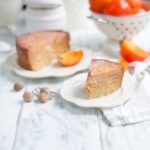Icing plays a crucial role in creating visually stunning cakes. Choosing the right icing can enhance not only the taste but also the aesthetics of a cake. In this article, we will explore different options for icing and discuss their suitability for various cake decoration styles. Understanding the importance of icing will empower you to take your cake decorating skills to new heights.
When it comes to cake decoration, buttercream icing is a classic choice known for its versatility and flavor. It allows for smooth finishes and can be easily piped into intricate designs. Fondant, on the other hand, offers a professional-looking finish with its smooth texture and ability to create intricate details. Royal icing is perfect for fine detailing as it dries hard and can hold delicate decorations in place.
Cream cheese frosting adds creaminess and tanginess to cakes, making it an excellent option for certain flavors. Ganache provides a rich, glossy finish that adds elegance to any design, whether as a drip effect or smoothly layered. Whipped cream icing brings lightness and fluffiness to cakes and works well with specific styles or occasions.
To choose the perfect icing for your cake decoration needs, it’s important to consider factors such as versatility, taste, texture, and difficulty in working with each type of icing. Through this article, we will compare these options comprehensively so you can make an informed decision on which one suits your preferences best. With endless possibilities offered by different icings, we encourage you to experiment and find your favorite for creating stunningly decorated cakes everyone will admire.
So let’s dive into the world of cake decorating icings – from buttercream to fondant, royal icing to ganache – and discover how each choice can elevate your cake decoration skills.
Buttercream Icing
Buttercream icing is a classic choice when it comes to decorating cakes due to its versatility and delicious flavor. This popular type of icing can be used in various ways and can easily be customized to suit different cake designs and flavors.
Versatility of Buttercream Icing
One of the main reasons why buttercream icing is a go-to choice for many cake decorators is its versatility. This type of icing can be easily colored using food coloring, allowing for endless possibilities when it comes to creating vibrant and eye-catching designs on cakes.
Buttercream icing can also be piped into intricate patterns, making it ideal for creating beautiful flowers, borders, or other decorative elements on cakes. Additionally, buttercream frosting can be smoothed onto the cake’s surface for a flawless finish or applied with a textured effect for a more rustic look.
Flavor Variations
Another advantage of buttercream icing is its wide range of flavor variations. While the classic buttercream recipe includes simple ingredients like butter, powdered sugar, and vanilla extract, there are countless flavor options available. For example, chocolate lovers may opt for chocolate buttercream icing by adding cocoa powder or melted chocolate to the base recipe.
Other popular flavor variations include lemon, almond, coffee, caramel, and coconut. This allows cake decorators to not only create visually stunning designs but also enhance the taste experience for those enjoying the cake.
Fondant
Fondant is a popular choice among professional bakers when it comes to cake decoration due to its ability to create a smooth and flawless finish. This type of icing is made from sugar, water, and gelatin, resulting in a pliable dough-like consistency that can be rolled out and draped over cakes. Fondant provides an excellent canvas for intricate designs and decorations, making it a go-to choice for special occasions such as weddings or birthdays.
One of the major benefits of fondant is its ability to create a seamless surface on cakes. It can hide imperfections and unevenness that may occur during the baking process, giving cakes a polished and sophisticated appearance. Fondant also allows for the creation of beautiful textures and patterns, such as ruffles or pleats, which can add depth and dimension to any cake design.
Many bakers prefer using fondant because it offers more freedom in terms of creativity. It can easily be colored with food coloring gels, allowing for endless possibilities in creating vibrant and eye-catching designs. Fondant can be sculpted into various shapes and figures, making it ideal for creating elaborate decorations like flowers, characters, or even entire scenes.
To work with fondant successfully, it is important to have some basic tools on hand. These can include rolling pins, smoothers for achieving an even finish, cutters for precise shapes and designs, and embossing mats or tools for adding texture. Additionally, some bakers use cornstarch or powdered sugar to prevent the fondant from sticking to surfaces while they work with it.
Royal Icing
When it comes to creating intricate cake decorations, royal icing reigns supreme. Its unique properties and versatility make it the ideal choice for adding fine detailing to cakes. Royal icing is made from just two ingredients – egg whites or meringue powder and powdered sugar – but its consistency allows for extensive creativity in cake decoration.
One of the standout advantages of using royal icing is its ability to harden completely when left to dry. This characteristic makes it perfect for creating delicate lace patterns, piped flowers, and intricate designs that require precision. Unlike other icings that may lose their shape or melt under certain conditions, royal icing holds up well even at room temperature or in warm environments.
Furthermore, the smooth texture of royal icing lends itself well to intricate designs. It can be easily piped through a variety of decorating tips to create small details like scrollwork, lettering, and lace borders. As a result, bakers and decorators often choose royal icing when they want their cake creations to have a professional look with sharp lines and precise edges.
In addition to its versatility and ability to hold intricate details, royal icing also offers the advantage of being pure white in color. This means that decorators can easily add food coloring or gel paste colors to achieve any desired shade without any interference from the natural color of the icing itself. The result is vibrant and visually striking decorations that are limited only by one’s imagination.
Overall, royal icing is an indispensable tool in cake decoration due to its unique properties that allow for intricate detailing and professional-looking finishes. Its ability to hold shape, dry hard, and adapt to different decorating techniques make it an excellent choice for creating stunning designs on cakes.
| Advantages | Uses |
|---|---|
| – Hardens completely when dry | – Creating delicate lace patterns |
| – Smooth texture for precise designs | – Piped flowers and small details |
| – White color allows for easy coloring | – Scrollwork, lettering, and lace borders |
Cream Cheese Frosting
Cream cheese frosting is a popular choice for cake decoration, offering a creamy and tangy flavor that complements a variety of cake flavors. It is known for its smooth and spreadable texture, making it easy to work with when creating different designs and decorations on cakes. This type of icing is especially well-suited for cakes with rich flavors like carrot, red velvet, or pumpkin spice.
One of the advantages of cream cheese frosting is its decadent creaminess. It adds a luscious layer of flavor to the cake, balancing out the sweetness with a subtle tanginess. The creamy texture also allows for smooth application, making it ideal for both spreading over the entire surface of the cake and piping intricate designs.
Cream cheese frosting can be flavored in various ways to enhance the overall taste experience. Common variations include adding a hint of vanilla extract, lemon zest, or even spices like cinnamon or nutmeg. These added flavors lend depth and complexity to the frosting, creating a delightful surprise for those who take a bite.
When it comes to pairing cream cheese frosting with cake flavors, certain combinations stand out as particularly delicious. For example, carrot cake with cream cheese frosting is an all-time favorite for many people due to the way the tanginess complements the earthy sweetness of the carrots. Red velvet cake also pairs exceptionally well with cream cheese frosting, as its rich chocolate flavor benefits from the contrast provided by the tangy frosting.
In summary, cream cheese frosting offers a creamy and tangy option for cake decoration that enhances both taste and aesthetic appeal. Its versatility allows for various design possibilities while providing a delicious complement to a wide range of cake flavors. Whether you’re looking to create an elegant wedding cake or simply want to add some extra flair to your homemade cupcakes, cream cheese frosting is sure to impress both visually and on your taste buds.
- Cream cheese frosting provides a creamy and tangy flavor.
- It has a smooth and spreadable texture, making it easy to work with for different designs and decorations.
- Pair it with rich cake flavors like carrot or red velvet for the best taste combination.
- Add vanilla extract, lemon zest, or spices like cinnamon to enhance the flavor of cream cheese frosting.
Ganache
Ganache, with its rich and glossy texture, is a decadent option for cake decoration. It adds an elegant touch to any cake, making it perfect for special occasions or when you want to make a statement. In this section, we will explore the various ways in which ganache can be used and the different effects it can create on cakes.
Ganache as a Drip Effect
One popular way to use ganache is as a drip effect on cakes. This technique involves pouring the ganache over the edges of the cake so that it drips down along the sides. The dripping ganache creates a visually stunning effect that adds depth and dimension to the cake. The contrast between the smooth surface of the cake and the glossy drips of ganache is truly eye-catching.
To achieve a perfect drip effect, it is important to ensure that your ganache has reached the right consistency. It should be thick enough to hold its shape but still pourable. You can adjust the consistency by varying the ratio of chocolate to cream in your ganache recipe. Once you have achieved the desired consistency, carefully pour the ganache over the edges of your cake, allowing it to naturally drip down.
Ganache as a Smooth Layer
Another way to use ganache in cake decoration is as a smooth layer covering the entire surface of the cake. When spread evenly over a cake, ganache provides a flawless canvas for further decorations such as fondant accents or piped details. Its smoothness creates a professional finish that will impress your guests.
To use ganache as a smooth layer, start by covering your cake with a thin layer of buttercream or other frosting to create an even base. Chill the cake until firm before applying the ganache. Heat your ganache slightly until it reaches a spreadable consistency and then pour it onto the center of your chilled cake.
Use a spatula to spread the ganache outwards, covering the entire surface evenly. Smooth out any imperfections and let the ganache set before adding any additional decorations.
Whipped Cream
Whipped cream icing is a popular choice for cake decoration due to its light and fluffy texture. This type of icing is made by whipping heavy cream until it reaches the desired consistency, resulting in a deliciously creamy and airy topping for cakes. Whipped cream icing is known for its delicate flavor that complements a variety of cake flavors, making it a versatile option for any occasion.
One of the advantages of using whipped cream icing is its ability to create a soft and ethereal look on cakes. The lightness of the whipped cream gives cakes an elegant and whimsical appearance, perfect for birthday parties, baby showers, or other special events. The smooth and velvety texture also provides an ideal base for decorating with fresh fruits, edible flowers, or chocolate shavings to enhance the visual appeal even further.
When working with whipped cream icing, it is important to note that it has a relatively short shelf life compared to other types of icing. Whipped cream can easily lose its shape and become deflated if not handled properly or left exposed to warm temperatures for too long. It is best to prepare and apply the whipped cream icing shortly before serving the cake to ensure its freshness and stability.
Comparing Icing Options
When it comes to choosing the perfect icing for cake decoration, there are several factors to consider. Each type of icing has its own unique characteristics and advantages, making the decision a matter of personal preference. Understanding these factors can help you make an informed choice and create a visually stunning and delicious cake.
One important factor to consider is versatility. Buttercream icing, for example, is known for its versatility and ability to be easily tinted or flavored. It can be used for simple buttercream borders or delicate piped designs, making it a popular choice for many decorators. On the other hand, fondant offers a smooth and professional finish that allows for intricate designs. Its pliability makes it ideal for creating detailed cake decorations such as flowers or figures.
Another factor to consider is taste. Cream cheese frosting is a flavorful option that pairs well with certain cake flavors such as carrot or red velvet. Its tangy creaminess adds depth to the overall taste experience. Ganache, on the other hand, offers a rich and decadent flavor that complements chocolate cakes perfectly. The glossy finish of ganache also adds an element of elegance to any cake design.
Texture is another key consideration when comparing icing options. Whipped cream icing, for instance, has a light and fluffy texture that lends itself well to certain cake styles such as angel food cakes or summer-themed desserts.
Its airy consistency creates an ethereal look and adds a subtle sweetness without being too heavy. On the other end of the spectrum, royal icing provides a smooth yet firm texture that allows for intricate detailing, especially when piping fine lines or delicate lace patterns.
Choosing the right icing for your cake decoration ultimately depends on your desired taste, aesthetics, and level of skill in working with different types of icings. Consider experimenting with various options to find your favorite and don’t be afraid to mix and match different icings to achieve your desired effect. With proper consideration of factors such as versatility, taste, and texture, you can create visually stunning and delectable cakes that will impress any audience.
Conclusion
In conclusion, choosing the right icing for your cake decoration is crucial in achieving a visually stunning and delicious masterpiece. Throughout this article, we have explored various options, each with its own unique qualities and advantages. It is important to consider factors such as versatility, taste, texture, and difficulty when making your decision.
Buttercream icing proves to be a classic choice due to its popularity and versatility. With many different variations and flavors available, it allows for endless creativity in cake decoration. On the other hand, fondant offers a smooth and professional finish that is perfect for creating intricate designs and smooth finishes. Its ability to hold its shape makes it a popular choice among professionals.
For those looking for fine detailing in their cake decorations, royal icing is the way to go. Its unique properties make it ideal for creating intricate patterns and designs with precision. Cream cheese frosting provides a creamy and tangy option that pairs well with certain cake flavors, while ganache offers a decadent and glossy finish that adds elegance to any cake.
Lastly, whipped cream icing is light and fluffy, adding a delightful touch to certain cake styles and occasions. When choosing the perfect icing for your cake decoration, it’s important to experiment with different options to find the one that suits your taste preferences and desired aesthetic.
Frequently Asked Questions
What kind of frosting do you use for cake decorating?
When it comes to cake decorating, there are several types of frostings that can be used, depending on the desired outcome. Buttercream frosting is a popular choice as it is easy to work with and provides a smooth finish. It is made by combining butter, powdered sugar, and vanilla extract. Its versatility allows for different textures and designs to be achieved. Fondant is another commonly used frosting for cake decorating, especially for more elaborate and detailed designs.
It is a pliable mixture of sugar, water, and sometimes gelatin, which can be rolled out and draped over cakes to create a smooth and flawless appearance. Ganache is another option that adds a glossy finish to cakes. It is made by melting chocolate with cream, resulting in a rich and decadent frosting. Ultimately, the choice of frosting depends on personal preference and the desired aesthetic for the cake.
Is frosting or buttercream better for cake decorating?
The preference between frosting and buttercream for cake decorating ultimately comes down to personal taste and the desired effect. Buttercream is a classic choice known for its creamy texture and rich flavor that complements many types of cakes well. It can be easily adjusted in consistency for various decorating techniques like piping or spreading smoothly across the cake’s surface.
The advantage of using buttercream is that it tends to hold up well at room temperature but may require refrigeration in hotter climates or if other perishable ingredients are incorporated into the recipe such as fresh fruit or whipped cream fillings. On the other hand, store-bought frosting typically has a sweeter taste compared to buttercream but may not be as pliable or easy to work with when attempting intricate decorations.
Is frosting or icing better for decorating?
The decision whether icing or frosting is better for cake decorating depends on personal preference and aesthetic goals. Icing usually refers to thinner glazes or drizzles that are poured over cakes rather than spread on evenly like frostings do. These thin consistencies allow icings to flow freely over baked goods, creating a glossy finish. Icing is often used to add a sweet and decorative touch without completely covering the cake’s surface, making it suitable for light and delicate decorations.
On the other hand, frosting typically refers to thicker and more spreadable mixtures that can be applied in smooth layers. This allows for better coverage and makes it easier to shape intricate designs using piping bags or palette knives. Both icing and frosting have their place in cake decorating depending on the desired style, level of intricacy, and taste preferences.

Welcome to my blog about home and family. This blog is a place where I will share my thoughts, ideas, and experiences related to these important topics. I am a stay-at-home mom with two young children. I hope you enjoy reading it! and may find some helpful tips and ideas that will make your home and family life even better!





